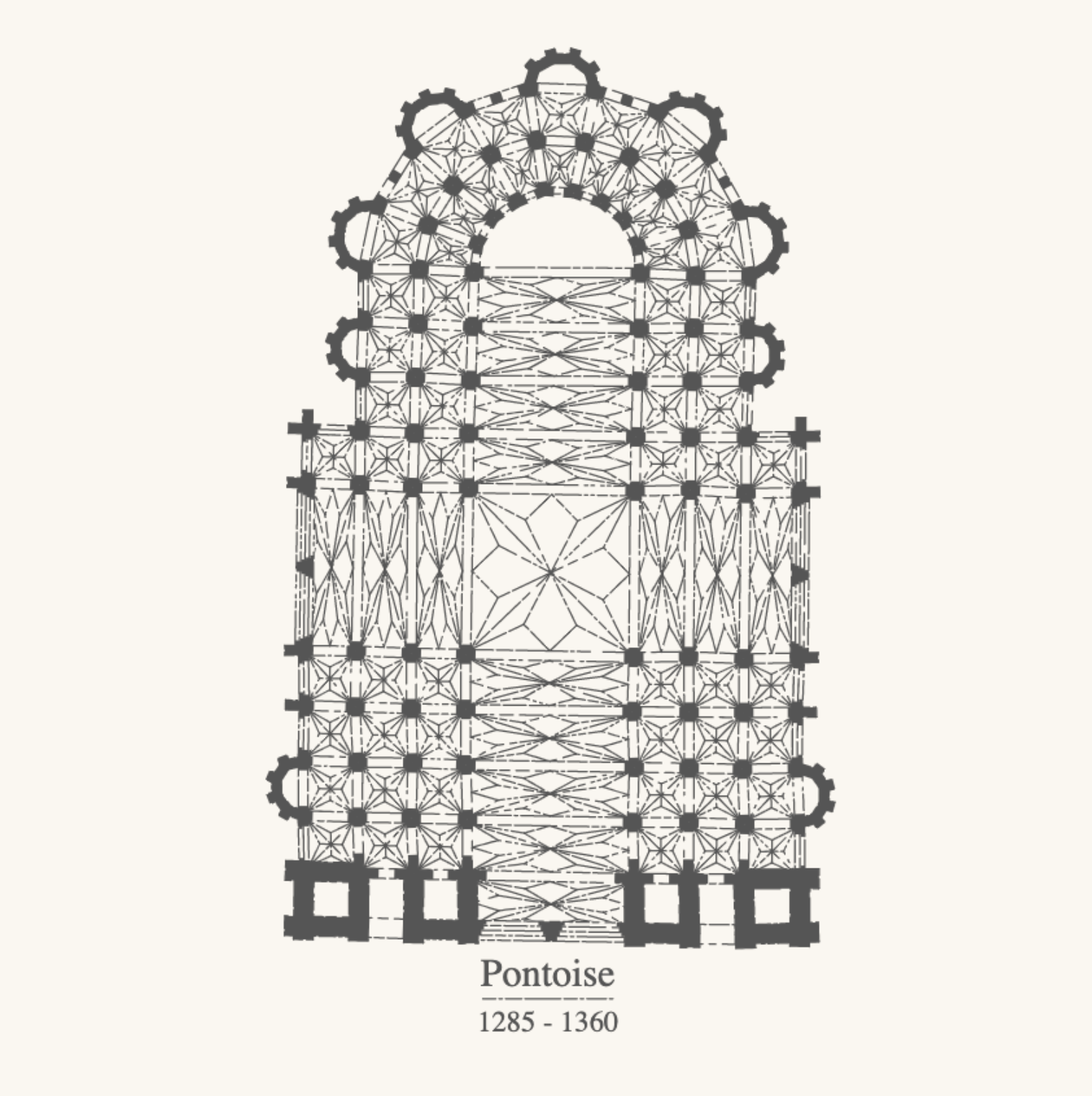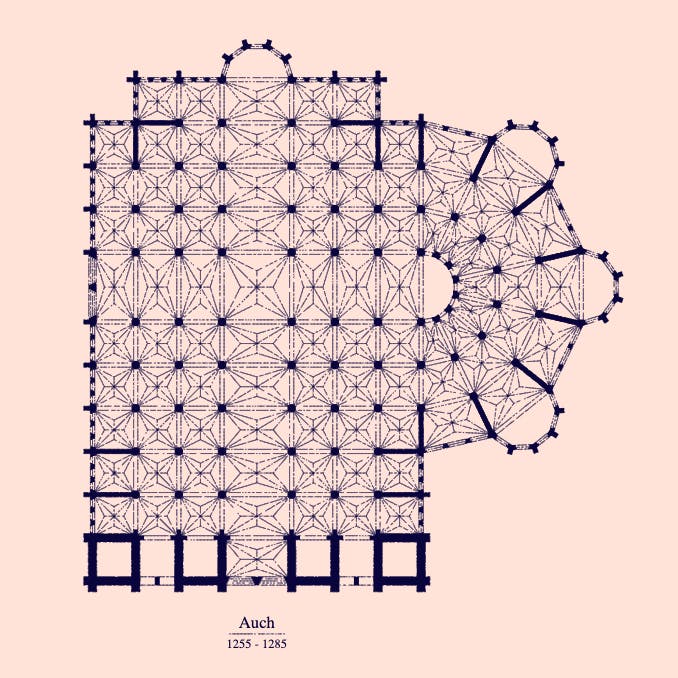- To zoom, press a mouse button when over the image or touch the screen. To pan, keep the mouse pressed and move it around.
- For a high quality version to print, view the piece Live, maximize the window and zoom out the browser setting as far as possible. Refresh, and right click to save the high resolution file.
Medieval Europe’s cathedrals were the quintessential representations of the Catholic Church’s temporal wealth and power. They’re monuments to centralization, representing the sum of many years of human effort and creativity for entire cities and regions. Today, some exist unchanged from their medieval form. In contrast, others cease to exist — torn down amidst the anti-clericalism during the Reign of Terror, destroyed in the World Wars, or abandoned to their fate.
In unbuilt, generative artist Jacek Markusiewicz applies the rules of sacral architecture to imagine 256 cathedrals that exist on the blockchain. Unlike their medieval counterparts, they are immutable - their stone cannot be worn away by time and age, their foundations cannot be shaken, and their walls cannot crumble…

unbuilt #6
In the same breath, their pews will never be worn to a polished sheen, their stained glass will never catch the morning light or inspire the faithful, and their halls will never be a shelter in a storm.
Today, we live in another period of high centralization — the first quarter of the 21st century has seen the continued consolidation of political, military, economic, and cultural power in the hands of the few. Each unbuilt serves to remind the viewer of where we have been as a human society, the paths not taken, and the seductive power of extreme centralization.

unbuilt #242
The decentralization that is a hallmark of blockchain technology, and the crypto-economic systems they enable, is a harbinger of societal change. There’s a real chance we stand on the precipice of another renaissance — one brought on by crypto.
As the refrain goes, “we are early.” We should take heart that humanity has been here before and that periods where the pendulum swings towards decentralization, while chaotic, give rise to societies where human creativity can truly flourish.